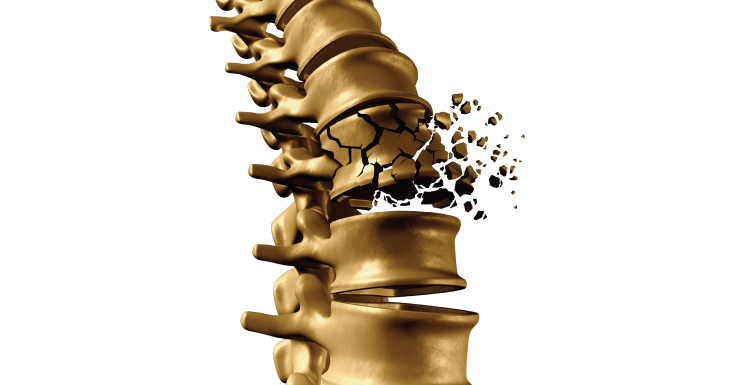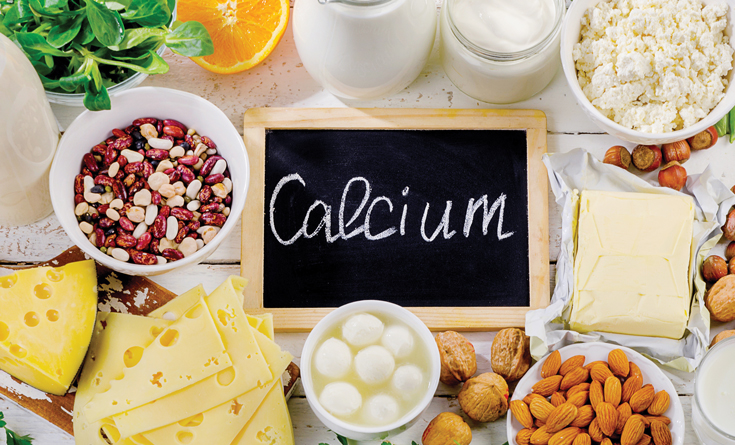Osteoporosis is a bone disease characterized by reduced bone density (bone mass) and disruption of microarchitecture. As bones become more porous and fragile, the risk of fracture is greatly increased. Osteoporosis is a silent disease and often there is no symptom until the first fracture occurs. The most common fractures associated with osteoporosis appear at the hip, spine and wrist.
Osteoporosis mainly occurs in postmenopausal women and elderly men. This disease can be divided into primary osteoporosis, which includes postmenopausal osteoporosis (type I) and senile osteoporosis (type II), as well as secondary osteoporosis, which has a clearly definable etiology such as malabsorption, medications like glucocorticoids, and some diseases that include hyperparathyroidism.
Risk factors range from increasing age, female sex, postmenopausal status, hypogonadism, low body mass index and ethnic background (white persons are at higher risk than black persons) to rheumatoid arthritis (RA), low BMD, vitamin D deficiency, low calcium intake, hyperkyphosis, current smoking, alcohol abuse, immobilization, and long-term use of certain medications, such as glucocorticoids, anticoagulants, anticonvulsants and cancer drugs.
The Role of Calcium
Calcium is the major building-block of our bone tissue, where 99% of our calcium storage is in the skeleton. From childhood to late 20s, bone mass continues to accumulate, and calcium is required to increase the bone mass. After that, our bone mass will slowly decrease with age. In women, the bone mass will further drastically decrease upon menopause.
High dietary intake of salt can deplete calcium storage and lead to bone loss. Therefore, it is important to reduce consumption of food with high salt content such as processed food, fast food, canned food, pickles, and sauce. WHO has recommended to limit salt intake to 2000mg daily, which is less than a teaspoon in a day.
A few studies have suggested that caffeine decreases bone mineral density (BMD), increases the risk of hip fracture and negatively influence calcium retention. However, if you have a good calcium and vitamin D intake, there is little reason for concern about moderate caffeine intake on your bones.
While beans contain calcium, magnesium, fibre and other nutrients, they are also high in phytates. Phytates interfere with your body’s ability to absorb the calcium that is contained in beans. A simple remedy would be to soak the beans in water for a few hours before cooking it.
The amount of calcium we need to consume changes at different stages in our lives. Calcium requirements are high in our teenage years with the rapid growth of the skeleton. With age, the body’s ability to absorb calcium declines, which is one of the reasons why seniors also require higher amounts.
Source: www.iofbonehealth.org
Preventing Osteoporosis
The primary goal of osteoporosis management is to reduce the risk of fracture. Treatment and prevention strategies include fall avoidance by correcting decreased visual acuity, reducing consumption of medication that alters alertness and balance, reducing fall hazards in the home (slippery floors, obstacles, insufficient light), and adequate dietary intake of protein, calcium, and vitamin D.
Adequate intake of calcium and vitamin D is highly essential for bone and muscle health. Vitamin D aids calcium absorption in the intestines and ensures normal muscle contractions. In women, the recommended daily allowance (RDA) for calcium is 1,000 mg/d for age range of 19 to 50 years and increases to 1,200 mg/d for older than 50 years. In men, the RDA of calcium is 1,000 mg/d for age range of 19 to 70 years and increases to 1,200 mg/d for older than 70 years.
The RDA for vitamin D is 600 IU/d for men and women aged 19 to 70 years and increases to 800 IU/d for those older than 70 years. All postmenopausal women, regardless of their bone density or clinical risk factors for osteoporosis should observe these recommendations.
The Malaysian Osteoporosis Society has also recommended daily intake of vitamin D3 800IU, especially in elderly with poor diet or minimal outdoor activities.
Additionally, one of the ways to strengthen bone and muscles is by exercising regularly. Weight bearing exercises such as walking and hiking, as well as resistance training such as weightlifting are the keys to healthy bone and muscles in senior years.
Ways to Ensure Good Bone Health Well into our Senior Years
- Get active – avoid a sedentary lifestyle
- Eat healthy
- Avoid smoking
- It is advisable to do a DEXA (Dual energy xray absorptiometry) scan in post-menopausal women and elderly men. This scan is a very accurate tool to diagnose osteopenia and osteoporosis.
References:
- https://www.iofbonehealth.org/what-is-osteoporosis
- Chan et al. Determinants of Bone Health Status in a Multi-Ethnic Population in Klang Valley, Malaysia. International journal of environmental research and public health. 2020 vol. 17,2 384.
- https://www.nof.org/patients/treatment/nutrition/
- Prema B Rapuri et al. Caffeine intake increases the rate of bone loss in elderly women and interacts with vitamin D receptor genotypes. The American Journal of Clinical Nutrition. 2001. Volume 74, Issue 5, Pages 694–700,
- https://doi.org/10.1093/ajcn/74.5.694
- https://americanbonehealth.org/nutrition/bonesense-on-coffee-tea-and-bone-health/
- Bischoff-Ferrari HA et al. Fall prevention with supplemental and active forms of vitamin D: a meta-analysis of randomised controlled trials. Br Med J. 2009.339: b3692.
- Malaysian Osteoporosis Society, Academy of Medicine Malaysia. Clinical practice guidelines of management of osteoporosis (Revised 2015)
- https://www.bones.nih.gov/health-info/bone/osteoporosis/overview

Consultant Orthopaedic Surgeon
Gleneagles Hospital Penang


















